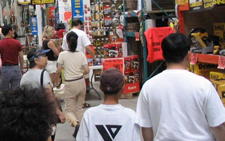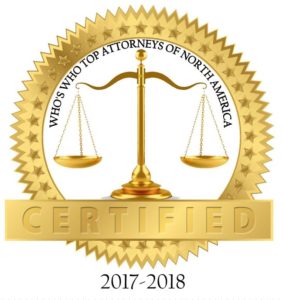THE OPEN AND OBVIOUS DOCTRINE AND PREMISES LIABILITY
06/29/14
Prior to 1976 the doctrine of “open and obvious” as applied to the defense of premise liability cases in New York State was oft used and typically successful. To obtain dismissal a defendant premises owner was required only to demonstrate that the complained of condition was not hidden or disguised, such that a trap like condition was created, but rather was visible to an ordinary individual reasonably employing his senses. The landmark decision of Basso v. Miller, 40 NY2d 233 (1976) however, effected a sea change in premises liability for New York defendants..
 Before Basso, the status of the plaintiff on the property defined the duty of care owed by the landowner. Thus, for example, under the pre- Basso formula, a landowner owed a far greater duty of care to a plaintiff lawfully on his property than a mere trespasser. The increasingly difficult assignment of precise categories to the status of plaintiffs however, led the New York State Court of Appeals to abandon that particular endeavor completely and establish a single duty of care for landowners regardless of the status of the plaintiff. Basso held that a landowner is charged with maintaining his property in a reasonably safe condition in view of all circumstances, including the likelihood of injury to others, the seriousness of the injury, and the burden of avoiding the risk of harm. While the status of the plaintiff was an element to consider in assessing foreseeability, it was no longer relevant in defining the duty owed by the landowner. The Court in Basso went on to specifically hold that negligence principles such as comparative negligence and assumption of risk apply to premises cases..
Before Basso, the status of the plaintiff on the property defined the duty of care owed by the landowner. Thus, for example, under the pre- Basso formula, a landowner owed a far greater duty of care to a plaintiff lawfully on his property than a mere trespasser. The increasingly difficult assignment of precise categories to the status of plaintiffs however, led the New York State Court of Appeals to abandon that particular endeavor completely and establish a single duty of care for landowners regardless of the status of the plaintiff. Basso held that a landowner is charged with maintaining his property in a reasonably safe condition in view of all circumstances, including the likelihood of injury to others, the seriousness of the injury, and the burden of avoiding the risk of harm. While the status of the plaintiff was an element to consider in assessing foreseeability, it was no longer relevant in defining the duty owed by the landowner. The Court in Basso went on to specifically hold that negligence principles such as comparative negligence and assumption of risk apply to premises cases..
Following Basso, many in the Bar assumed that the “open and obvious” doctrine was now dead and indeed, many in the Bar continue to practice under this misapprehension. The prevailing thought is that the plaintiff’s failure to recognize and or appreciate an open and obvious condition does not now bar recovery but simply acts to reduce any award based on the plaintiff’s own comparative negligence. This view however, wrongly circumscribes the applicability of the “open and obvious” doctrine.
As the Appellate Division in Cupo v. Karfunkel, 1 A.D.3d 48 (2d Dept 2003) observed, where it is demonstrated only that the complained of condition is open and obvious dismissal is inappropriate and such an argument is relevant only to the comparative negligence of the plaintiff. If however, it is demonstrated that the complained of condition is both open and obvious and, as a matter of law, not inherently dangerous a Court must dismiss the claim. Thus, the “open and obvious” doctrine survives as a vehicle for dismissal with the caveat that in addition to demonstrating that the complained of condition was open and obvious, a defendant must also now demonstrate that the condition was not inherently dangerous.
 Application of the doctrine is demonstrated in Sclafani v. Washington Mutual, 36 AD3d 682 (2nd Dept., 2007) successfully argued by this firm. In Sclafani, plaintiff tripped and fell over a concrete parking stop in the lot servicing a Washington Mutual Bank suffering severe personal injuries. Even though the parking stop was set at an angle both the Trial and Appellate Court found that the white concrete stop on the black asphalt was open and obvious, as it was readily observable by those employing the reasonable use of their senses and, as a matter of law, not inherently dangerous. Upon satisfying this two prong test, dismissal of plaintiff’s entire claim followed. The lower court’s dismissal was affirmed on appeal.
Application of the doctrine is demonstrated in Sclafani v. Washington Mutual, 36 AD3d 682 (2nd Dept., 2007) successfully argued by this firm. In Sclafani, plaintiff tripped and fell over a concrete parking stop in the lot servicing a Washington Mutual Bank suffering severe personal injuries. Even though the parking stop was set at an angle both the Trial and Appellate Court found that the white concrete stop on the black asphalt was open and obvious, as it was readily observable by those employing the reasonable use of their senses and, as a matter of law, not inherently dangerous. Upon satisfying this two prong test, dismissal of plaintiff’s entire claim followed. The lower court’s dismissal was affirmed on appeal.
In the context of a large box store the “open and obvious” doctrine finds expression in Maravalli v. Home Depot USA, Inc., 266 A.D.2d 437 (2d Dept 1999) The plaintiff brought the action to recover damages for personal injuries allegedly sustained when he fell over a sink vanity lying in the aisle of the Home Depot store. While the appellate court acknowledged Home Depot’s duty to maintain its store in a reasonably safe condition so as to prevent the occurrence of foreseeable injuries, the Court went on to hold that the vanity was open and obvious to someone employing the reasonable use of their senses and that the vanity was not an inherently dangerous condition. Based on this twin finding, the “open and obvious” doctrine mandated dismissal. The Court went on to observe that where the condition is indeed open and obvious there is no duty on the part of owner to warn of same.
In more traditional commercial settings the “open and obvious” doctrine has been applied to such diverse objects as benches, merchandise racks and dressing room hooks. The key component in all these decisions is the demonstration that the alleged offending article was not merely open and obvious but not inherently dangerous as well. Thus, during discovery and most particularly depositions, counsel needs to establish not only that the alleged offending article was readily observable but innocuous as well in order to successfully argue the “open and obvious” defense.
While the “open and obvious” doctrine has certainly become more difficult to invoke with the additional mandate of demonstrating that the alleged offending condition was not inherently dangerous the doctrine is still viable and provides a complete defense to a landowner in the appropriate setting. For every defense counsel faced with a premise liability claim, it remains an invaluable tool to be closely considered at the inception of the litigation since its successful application provides complete immunity to the landowner client.
Return

